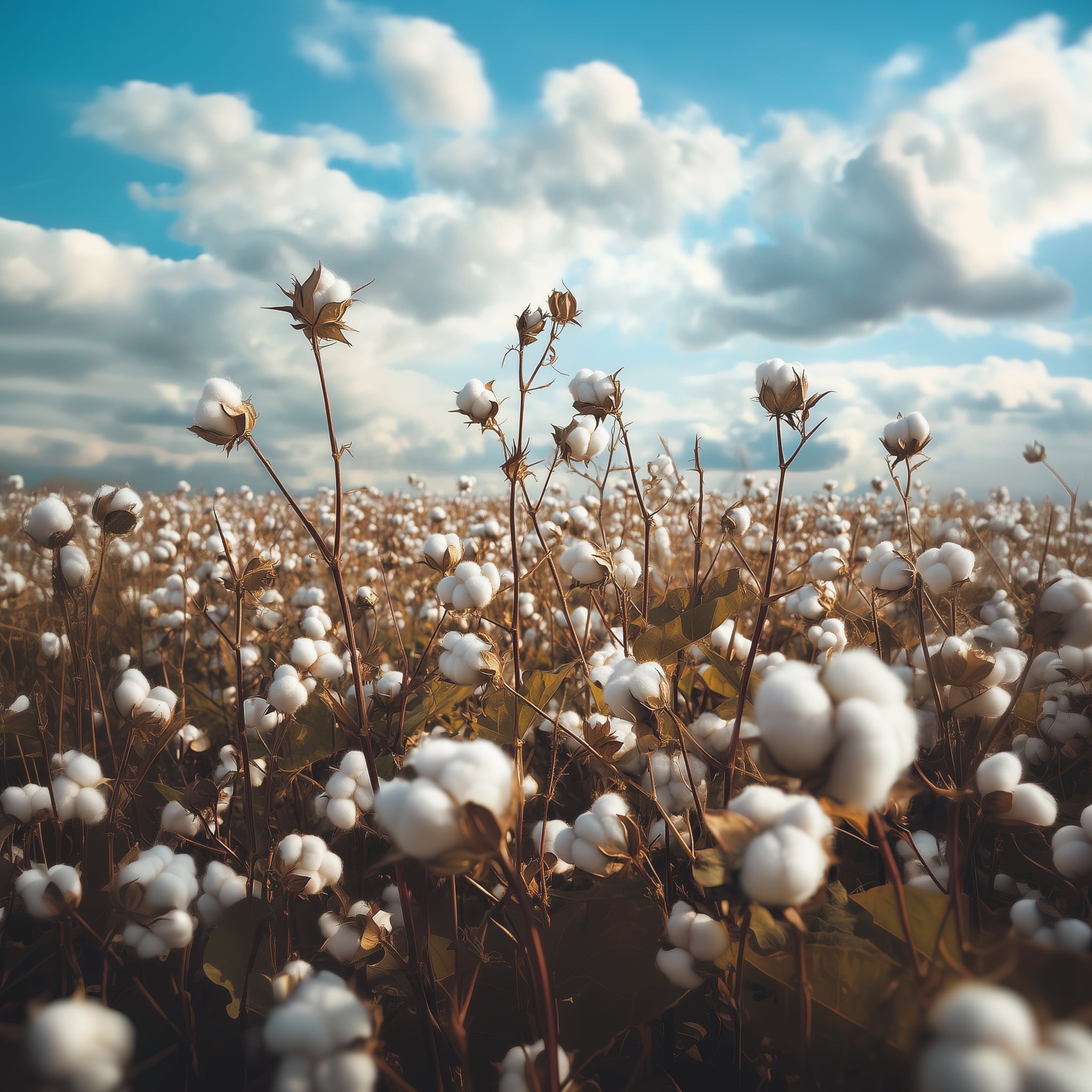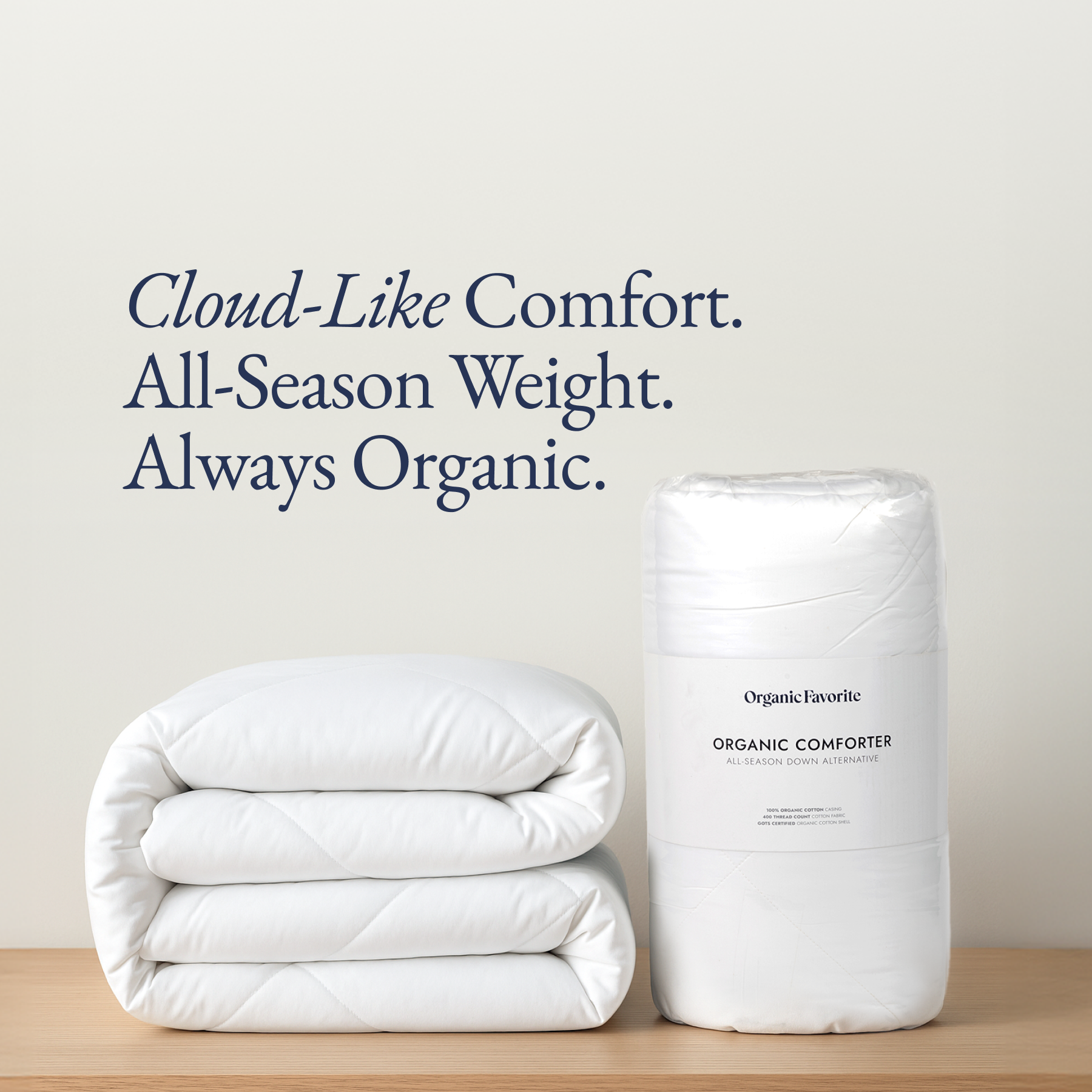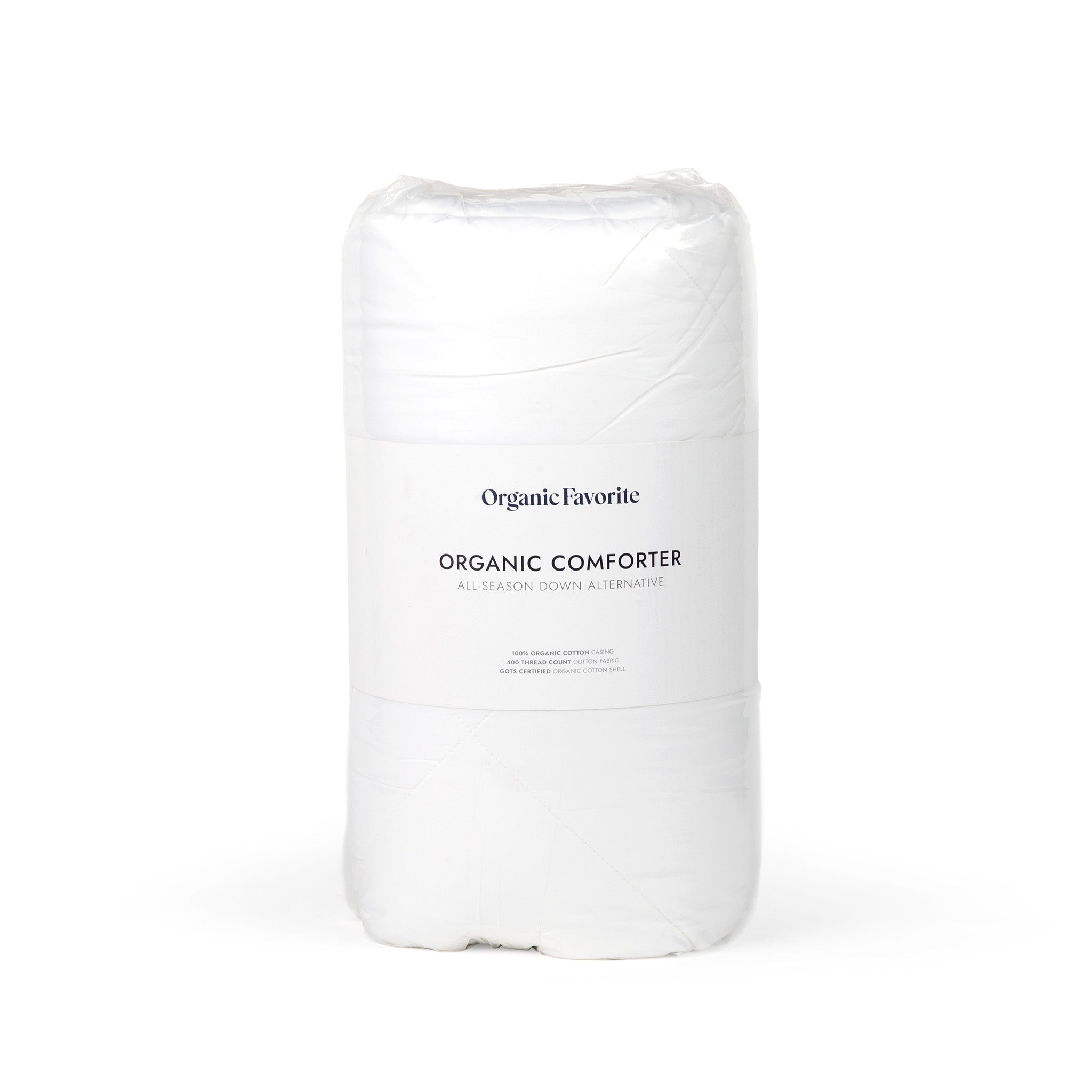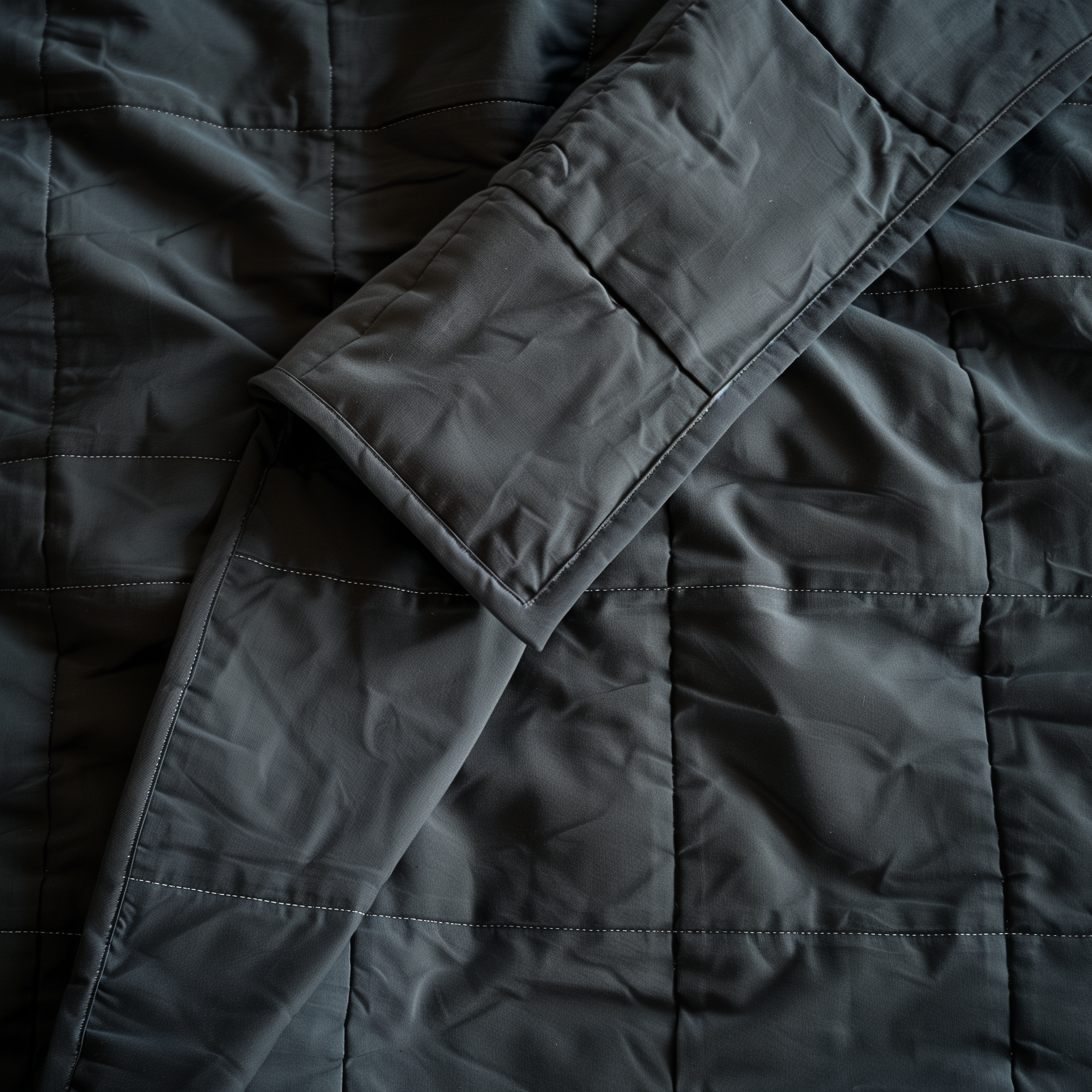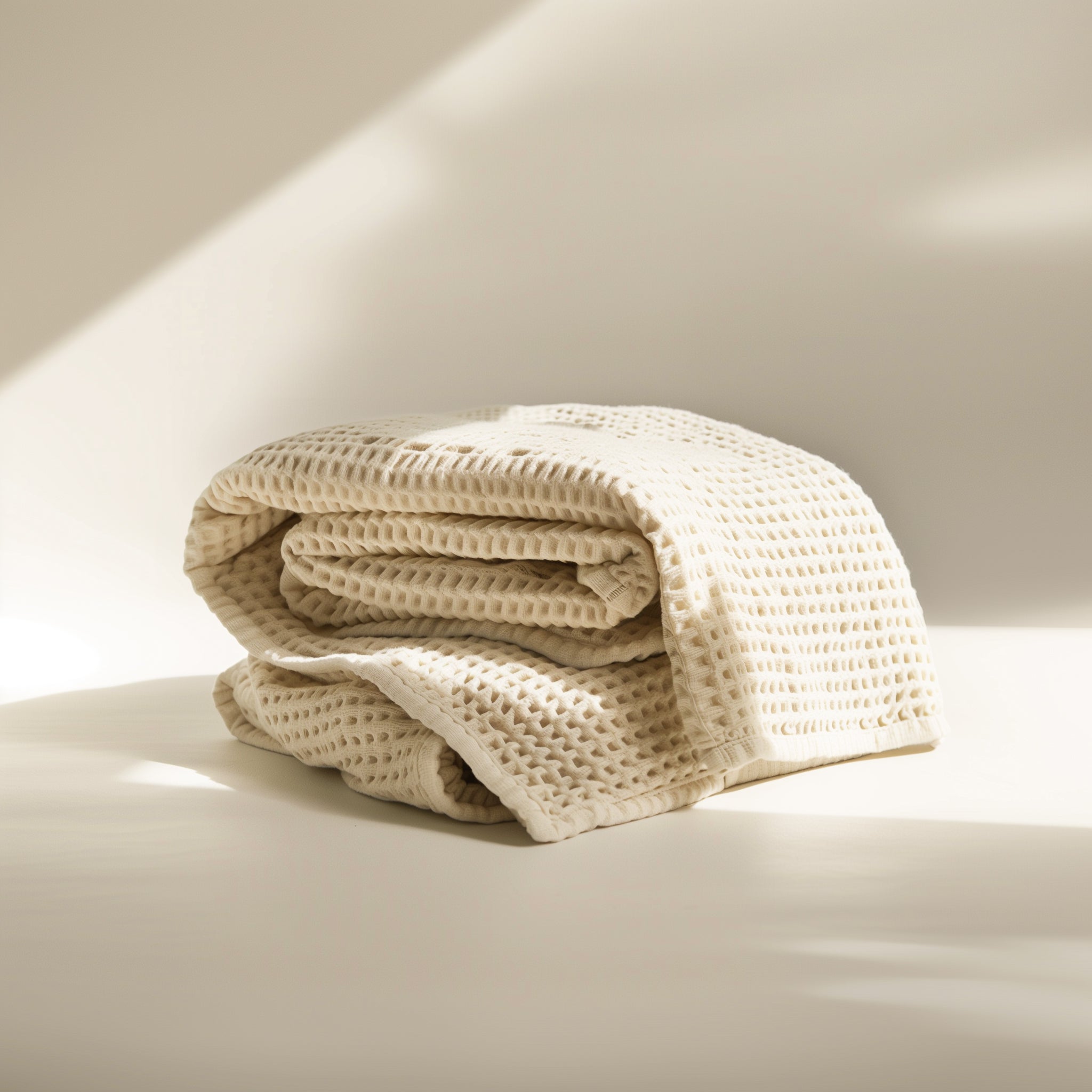The Truth About Sustainable Cotton: Challenges, Solutions, and Sleeping Better
We've all enjoyed the soft, comforting embrace of cotton sheets and blankets at some point. But have you ever stopped to think about the impact of producing all that cotton? The conventional cotton industry carries a far greater toll on our planet than the average person realizes.
If you're concerned about your environmental footprint but still crave the creature comforts of buttery soft bedding, it's time to evaluate this staple fabric's sustainability more closely.
Let's dive into cotton's past, present, and future—and why making mindful choices about what you bring into your home matters more than you might think.
Cotton's Environmental Impact: The Harsh Reality
When we talk about sustainable fashion and textiles, the first hurdle is recognizing the severity of conventional cotton's environmental and human toll. We'd be remiss not to start there before exploring solutions.
Water Woes
Growing enough cotton to produce just one t-shirt requires an astounding 700 gallons of water—roughly equal to an average person's three-year supply of drinking water. With agriculture already stressing fragile water systems around the world, cotton's intense thirst is a bitter pill to swallow.
Conventional cotton farming techniques, focused on rapidly extracting every last ounce of profit, have laid waste to underground aquifers and diverted scarce water resources away from communities that need them most. It's a thirst that can't be easily quenched in a world facing mounting climate pressures.
Toxic Consequences
Even more troubling is that 16% of all pesticides used worldwide are sprayed on cotton crops, despite it occupying less than 3% of the world's farmland. These harsh chemicals not only endanger the farmers and communities nearby, but also seep into groundwater supplies, harming ecosystems for generations to come.
The United States alone contributes 55 million pounds of hazardous pesticides to cotton production every year—many of which have been banned in other countries due to health concerns. At what cost does our desire for a piece of clothing or bedding arrive on the doorstep?
Habitat Destruction
To make room for new cotton fields, farmers have cleared away nearly 5% of all forestland on the planet. As woodlands disappear to grow the thirsty plants, entire ecosystems are disrupted, displacing local species and contributing to atmospheric carbon levels that further exacerbate climate change.
Unless we find ways to limit our ravenous cotton appetites or transition to more sustainable farming methods, this cycle of habitat destruction and pollution will only continue to degrade our dwindling environmental resources.
The Global Shift
The gravity of conventional cotton's footprint underscores why the race is on to find ways of producing this soft, breathable fiber without punishing the planet in the process. Luckily, a growing movement of sustainable cotton pioneers are blazing a trail forward to a greener future.
Breaking the Cycle: The Rise of Sustainable Cotton
It's not just farmers and textile makers waking up to the need for sustainable cotton production. An increasing number of consumers are realizing their purchasing decisions carry weight in shaping the future of this industry. As we collectively demand cleaner processes, the marketplace is pivoting to meet those expectations.
Regenerative Organic Farming
At the heart of this evolution lies regenerative organic farming. By eliminating synthetic pesticides, fertilizers, and genetic engineering, these farms cultivate cotton in sync with natural ecosystems instead of disrupting them. They actively restore soil quality, conserve water resources, and prioritize biodiversity.
The results are beautiful fields that nourish the earth rather than deplete it—and soft, breathable cotton goods with a fraction of the environmental impact. It's no wonder regenerative organic methods are rapidly gaining momentum across the globe.
The Role of Certifications
But how can you determine which brands truly follow sustainable practices? Here's where rigorous certification bodies like GOTS (Global Organic Textile Standard) come in. Their comprehensive regulations mandate strict requirements around:
- Use of 100% certified organic fibers
- Non-use of synthetic chemicals or GMO crops during cultivation
- Ethical labor standards and safe working conditions
- Restricted water usage and proper treatment of liquid waste
This universal organic textile standard provides shoppers a transparent way to identify products grown and manufactured responsibly at every stage. From the very first cotton seed planted to the final garment dyeing process, the GOTS logo empowers us to make informed choices.
Beyond GOTS, respected sustainability initiatives like the Better Cotton Initiative bring thousands of farmers together to collectively reduce pesticide usage and protect ecosystems. These large-scale efforts are helping reshape how we define the "conventional" cotton supply chain for good.
From Fields to Bedrooms
Speaking of supply chains—if you pictured freshly-picked cotton being spun into fabric nearby, think again. Most crops still travel thousands of miles during processing, offsetting some sustainability gains through carbon emissions along the way.
This disconnect between source and shelter is precisely what inspired companies like organic favorite. By partnering directly with ethical cotton farmers and manufacturers near those fields, they've streamlined the journey from responsibly cultivated crops to the cozy bedding on your mattress.
It's this commitment to traceability that sets the bar for sustainability throughout the supply chain. From those initial organic seeds to the GOTS-certified organic cotton comforter arriving at your doorstep, every step prioritizes environmental consciousness and human welfare.
The future of this industry lies in bringing us closer to the source while ensuring fair treatment of people and the planet. And when your head hits that organic cotton pillowcase tonight, doesn't it feel good to know your choices helped create that future?
Conventional vs. Organic Cotton: What's the Difference?
When most of us envision cotton, those fluffy bolls swaying in the breeze come to mind. The fiber itself appears pure and natural, so what makes organic cotton so different from conventionally grown crops?
The key distinction is in how that cotton is cultivated—and the hidden costs conventional farming exacts on human health and ecological systems in the quest for higher yields.
The Pesticide Predicament
According to the Environmental Protection Agency, the United States' conventional cotton crops alone account for nearly one-quarter of all insecticide use and 16% of all pesticide expenditures across all agricultural industries.
A vast majority of these pesticides are classified as moderately hazardous or worse. Not only do these chemicals place farmers and field laborers in harm's way, their residues linger on cotton products and accumulate in surrounding soil and water supplies.
In contrast, organic GOTS-certified cotton prohibits the use of harsh synthetic pesticides and fertilizers altogether. Plants are grown using only biological pest management and organic fertilizers—without risking the widespread exposure to toxins conventional methods entail.
The impact on both human and environmental health is difficult to overstate. Going organic means avoiding both direct pesticide exposure and the bioaccumulation of toxic residues in global ecosystems.
The Softer Alternative
Beyond being free from hazardous chemical residues, organic cotton also cultivates a gentler, more breathable fiber. Never treated with the harsh finishes required for conventionally grown cotton, organic crops result in a remarkably soft and supple textile.
Many organic cotton connoisseurs report a buttery smooth hand feel that gets even better over time. Avoiding bleaches, formaldehyde dyes, and other synthetic finishings helps maintain cotton's natural wicking properties so it stays cool and refreshing against your skin.
As I slipped between the sheets of the organic cotton sateen comforter from organic favorite, I was struck by its cloud-like softness. More impressive was how it felt temperature-regulating yet breathable all night long—a far cry from the swamp-like synthetic covers I was used to.
Certified organic cotton bedding simply feels more luxurious because you're getting the full, untarnished essence of this plush natural fiber. You're treating both your skin and the planet with the tenderness they deserve.
The Certifications That Matter: Your Organic Bedding Guide
If you're intrigued by the potential benefits of switching to organic goods but unsure how to identify which brands keep their eco-friendly promises, you're not alone. Ambiguous marketing terms like "green," "eco," and even "natural" make it tougher for shoppers to separate truly sustainable products from greenwashed impostors.
This confusion around certifications and standards is precisely why we started organic favorite—to provide complete transparency around ethical organic textiles. While third-party verification bodies like GOTS have become the gold standard for this industry, many consumers remain unaware of what their rigorous requirements entail.
So let's define what the key organic and sustainability seals on product labels actually mean. Understanding these stringent guidelines is the only way to shop with confidence and drive meaningful change.
GOTS: The Golden Organic Textile Standard
The Global Organic Textile Standard (GOTS) represents the highest organic certification for fibers like cotton. Products bearing their iconic logo have met strenuous social and environmental criteria throughout the entire supply chain:
- Organic Fiber Standards: Grown without synthetic fertilizers, pesticides, and genetically modified seeds under organic farming practices.
- Processing Standards: All dyeing and finishing is performed using non-toxic, low-impact materials and methods.
- Manufacturing Standards: Strict wastewater treatment and Fair Trade labor principles are enforced.
- Labeling Requirements: Integrity of organic fibers is ensured through physical traceability and transaction certification.
From the cotton seed to the cut and sew facility, GOTS certification creates a transparent, verified chain of custody you can trust. Every step prioritizes human and environmental health while preserving the premium quality organic materials deserve.
When you purchase a GOTS-certified cotton comforter like the one from organic favorite, you know exactly what level of eco-conscious care went into producing it—without any ambiguity or greenwashing.
Other Ethical Textile Certifications
While GOTS is considered the highest organic standard to achieve, other reputable sustainability certifications ensure more ethical practices are being followed throughout the supply chain:
- OEKO-TEX®: Tests for harmful substances, ensuring textiles are free from over 100 concerning chemicals and synthetics.
- Fair Trade Certified™: Verifies farmers were compensated fairly and worked under ethical labor conditions.
- MADE IN GREEN by OEKO-TEX®: In addition to testing for toxins, this certification holistically evaluates facilities on key sustainability factors like emissions, energy use, worker safety, and waste management.
Collectively, these third-party verifications mean your organic bedding truly earns its eco-friendly credentials through global rigorous inspection. It's a practice at the core of how organic favorite does business.
Shopping Confidently for Healthy Bedding
The process of decoding these standards may seem overwhelming at first, but it's a worthwhile education. Certifications like these represent a triumph for radical product transparency so you can create the toxin-free, sustainable bedroom sanctuary you desire.
Beyond clear consciences, certified organic cotton bedding also provides tangible comfort benefits for the people spending up to one-third of their lives tucked between the sheets. With no pesticide residues or chemical finishings, sensitive individuals can sleep easier without the worry of irritating allergies, itchiness, or respiratory issues.
At the end of the day, that's what shopping for eco-friendly goods is all about—personal wellbeing and peace of mind. Because of tenacious third-party verification processes, you can purchase certified organic cotton with supreme confidence in what those seals represent.
Labor Rights: The Human Cost of Conventional Cotton
Concerning environmental impacts aside, we'd be remiss not to acknowledge the severe human welfare issues pervading the conventional cotton industry. Like many global commodity businesses, this enormous $32 billion trade too often breeds worker exploitation in order to maximize profits.
Ask yourself—where were those super cheap cotton sheets you loved so much actually produced? And under what deplorable labor conditions did they arrive at such startlingly low retail prices?
The Bitter Reality of Global Cotton Cultivation
Cotton crops are sourced from a number of countries, many of which lack comprehensive labor protections and fair practices:
- India and Pakistan produce around 55% of global cotton, but have a history of using child and forced labor in fields.
- Uzbekistan has been accused of state-sponsored forced labor in its cotton sector.
- Many African nations provide few employee safeguards in textile manufacturing facilities.
Even in regions that have abolished child labor, workers are often subjected to poverty wages, unsafe working conditions, and sexual harassment without recourse. At best, these injustices enable companies to cut costs; at worst, they bankroll systematic human rights violations along the supply chain.
Clearly, the cotton industry's troubles extend far beyond just environmental sustainability.
Ethical Fashion's Empowering Role
If we accept these disheartening truths, then we must also recognize that every purchase represents a vote for how business should be conducted. By choosing to invest in responsibly grown, fair trade organic cotton, we signal our desire for more ethical practices that uplift communities instead of oppressing them.
The GOTS and Fair Trade initiatives I mentioned earlier? Those logos confirm not just organic purity but also that rigorous standards were met around:
- Fair wages for farmers and factory laborers
- No child labor or forced labor employed
- Safe working conditions and reasonable hours
- Freedom of association and collective bargaining
- Non-discrimination and gender equality
- Environmental protection and sustainable water use
Empowering workers in this historically exploitative sector is an essential step toward the kind of world we wish to create. Even if an organic product costs slightly more than the alternative, you'll sleep better knowing that choice helped a global community provide for their families rather than reinforcing poverty and labor abuse.
Our impact as consumers is far greater than we often give ourselves credit for. At organic favorite, we embrace our ability to wield that power responsibly through fair trade organic cotton that keeps human dignity and environmental stewardship top priorities.
An Organic Cotton Comforter: Cozy Luxury, Clear Conscience
Few purchases underscore our reverence for ethical living like an all-natural bedding product does. We spend one-third of our lives sleeping after all, so what we choose to cocoon ourselves in carries profound meaning.
With that in mind, I'd like to introduce you to the bedding centerpiece of organic favorite's collection: our GOTS-certified Organic Cotton Comforter. Its rich heritage represents a truly full-circle approach to responsible sleep.
Seeds of Sustainable Indulgence
The story begins with Indian farmers who have switched from conventional growing to regenerative organic practices. We partner exclusively with cooperatives that receive extensive training in organic farming methods like cover cropping, crop rotation, and biological pest management.
Their hard work yields certified organic cotton harvests—free of synthetic chemicals and GMOs. But it also achieves something far greater: preserving invaluable water reservoirs, revitalizing overtaxed soil health, and safeguarding the fragile ecosystems surrounding these fields.
Their careful stewardship of the land exemplifies organic agriculture's positive role in combating climate change and environmental degradation. Perhaps most importantly, it provides these farmers a living wage and safer working conditions.
From Raw Fibers to Sleep Sanctuary
The freshly harvested organic cotton then travels to an Indian factory that carries both GOTS and OEKO-TEX® certifications. There, the raw fibers undergo spinning into lusciously soft 400-thread-count sateen that meets the highest certified organic textile standards.
No toxic dyes, softeners, or finishers are applied—just plush, breathable natural cotton in its purest form. This uncompromising approach preserves the material's inherent temperature-regulating benefits and gentle hand feel.
The sateen is then sewn into our signature comforter shell, stuffed with hypoallergenic synthetic down fill, and assembled under strict fair labor regulations. It's a fully transparent process befitting of a product intended for your ultimate wellness sanctuary: the bedroom.
At last, the completed Organic Cotton Comforter wings its way to your doorstep under plastic-free, recyclable packaging. I can practically hear your sigh of serene relief as you wrap yourself in its restorative embrace for the first time.
Is it any wonder this comforter has earned a place among our best-selling bedding pieces? It represents everything organic favorite stands for—luxurious indulgence, human welfare, and environmental harmony in perfect balance.
The Small Steps for a Sustainable Future
As you peel back the layers behind a simple product like organic cotton bedding, suddenly the decision feels heavier. More profound. You realize your choice can either reinforce a broken system of human oppression and ecological destruction...or give rise to an ethical, sustainable future.
It's an immense responsibility that can feel daunting at first. But I have faith in our belief that every small, mindful change we make—like switching to an organic cotton comforter—has a ripple effect that builds powerful momentum.
It starts with treading a bit lighter on the Earth, respecting the people who labored to grow and harvest those cotton fibers under ethical conditions. From there, it awakens a deeper reverence for the natural world—understanding that human systems can harmonize with environmental needs if we make the effort.
One organic cotton sheet set leads to a bedroom set. Then a bathroom refresh. Before you know it, you've created a sanctuary free from toxic chemicals, excessive plastic packaging, and rampant waste. All in service of greater personal wellness

